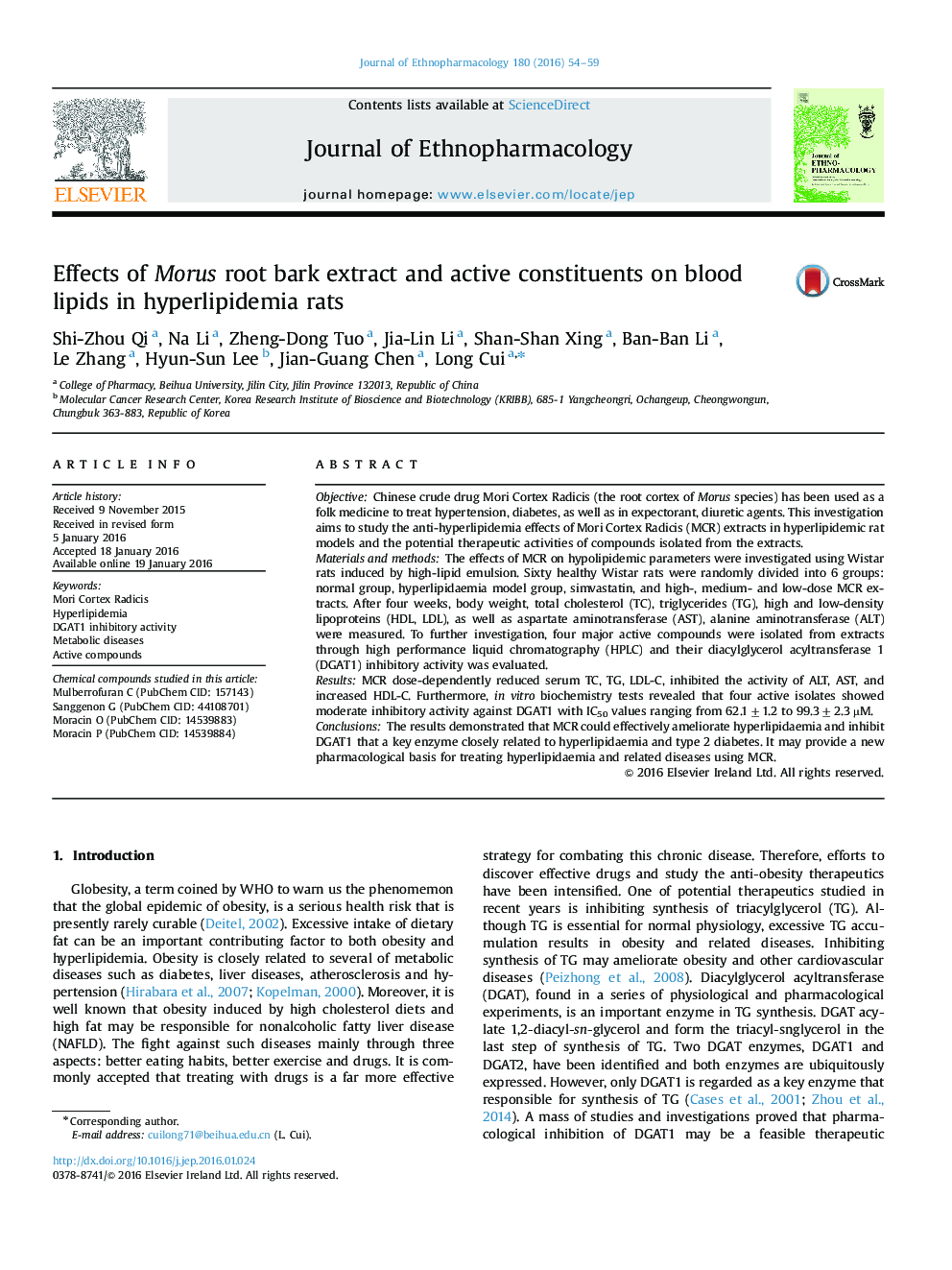| Article ID | Journal | Published Year | Pages | File Type |
|---|---|---|---|---|
| 5834658 | Journal of Ethnopharmacology | 2016 | 6 Pages |
ObjectiveChinese crude drug Mori Cortex Radicis (the root cortex of Morus species) has been used as a folk medicine to treat hypertension, diabetes, as well as in expectorant, diuretic agents. This investigation aims to study the anti-hyperlipidemia effects of Mori Cortex Radicis (MCR) extracts in hyperlipidemic rat models and the potential therapeutic activities of compounds isolated from the extracts.Materials and methodsThe effects of MCR on hypolipidemic parameters were investigated using Wistar rats induced by high-lipid emulsion. Sixty healthy Wistar rats were randomly divided into 6 groups: normal group, hyperlipidaemia model group, simvastatin, and high-, medium- and low-dose MCR extracts. After four weeks, body weight, total cholesterol (TC), triglycerides (TG), high and low-density lipoproteins (HDL, LDL), as well as aspartate aminotransferase (AST), alanine aminotransferase (ALT) were measured. To further investigation, four major active compounds were isolated from extracts through high performance liquid chromatography (HPLC) and their diacylglycerol acyltransferase 1 (DGAT1) inhibitory activity was evaluated.ResultsMCR dose-dependently reduced serum TC, TG, LDL-C, inhibited the activity of ALT, AST, and increased HDL-C. Furthermore, in vitro biochemistry tests revealed that four active isolates showed moderate inhibitory activity against DGAT1 with IC50 values ranging from 62.1±1.2 to 99.3±2.3 µM.ConclusionsThe results demonstrated that MCR could effectively ameliorate hyperlipidaemia and inhibit DGAT1 that a key enzyme closely related to hyperlipidaemia and type 2 diabetes. It may provide a new pharmacological basis for treating hyperlipidaemia and related diseases using MCR.
Graphical abstractDownload high-res image (147KB)Download full-size image
